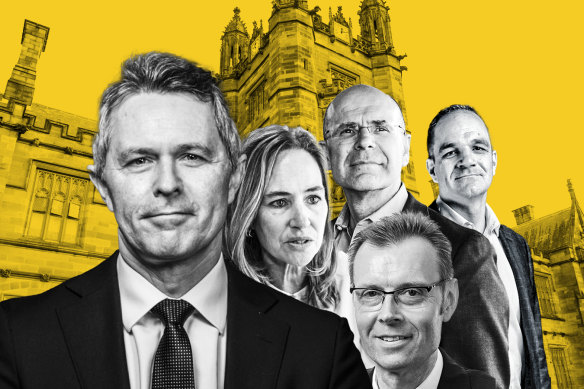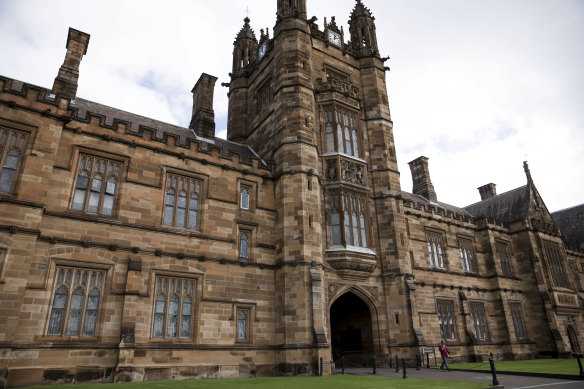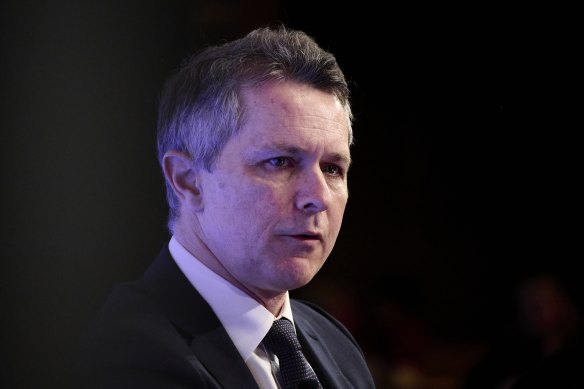Top Sydney unis are the biggest targets of the student cap. It will cost the state billions
By Daniella White and Matt Wade

Federal Education Minister Jason Clare announced the reforms on Tuesday.Credit: Dominic Lorrimer/Jamie Brown
Sydney’s two top universities have emerged as the biggest targets of the federal government’s new foreign student caps and there are warnings the changes will cost the NSW economy billions of dollars.
New international student numbers will be limited to 270,000 next year, with Sydney University and University of NSW likely to have their new overseas enrolments slashed by more than 40 per cent compared to this year under the reforms announced on Tuesday by Education Minister Jason Clare.

Business groups are warning that billions will be stripped from the NSW economy under the planned caps.Credit: Dominic Lorimer
The news
One of NSW’s biggest export industries will be damaged and billions of dollars stripped from the state economy by the new federal government cap on international students, peak body Business NSW has warned.
UNSW and Sydney University will lose hundreds of millions in revenue, with thousands fewer new students in Sydney next year, and are staring down the barrel of significant job losses.
Each university and college has been given an individual cap for 2025, which requires federal legislation to be implemented.
The new limits on international student enrolments come as the federal government responds to political pressure to reduce overall migration numbers.
How we got here
Universities enjoyed massive growth in international student numbers after the COVID-19 pandemic, encouraged by Morrison government reforms which incentivised foreign students to stay in the country, including offering more work hours and cheaper visas to help plug workforce shortages.
But reducing the number of students has now become central to the Labor government’s pledge to slash immigration by 2025 as it faces increased political pressure in the lead-up to the election.
Late last year, it introduced Ministerial Direction 107 to slow down visa processing and identify non-genuine students, who come to the country predominantly to work instead of study.
Officials had to prioritise the visa applications from “low-risk” universities that had low rates of visa rejections.
In practice, top universities that rely on Chinese students were able to more easily recruit students while smaller and regional universities whose students come from countries viewed as high risk like Nepal, Pakistan and India, lost enrolments.
Clare, who holds the Sydney federal seat of Blaxland, said the caps would make the system fairer so it wasn’t just a “lucky few” universities that benefited from international education.
“This is setting numbers back to the levels they were last year. And I don’t think anybody last year was saying that this was having a massive negative effect on the economy or on universities,” he said.

Education Minister Jason Clare.Credit: Michael Quelch
Why it matters
International education is the state’s second-biggest export after coal; the sector was valued by the NSW government at $17.9 billion last year.
Along with tuition fees, spending by overseas students supports many jobs in hospitality and retail trade. International students are also an important source of labour.
Business NSW chief executive Daniel Hunter warned the international student cap would cost the NSW economy billions of dollars and harm the state’s international reputation.
“A sudden drop in these numbers will mean more businesses will struggle to keep the doors open,” he said.
“The decision damages our leading brand in NSW as an international education provider and hands the initiative to our overseas rivals.”
Hunter called on the Albanese government to reconsider the decision to limit student numbers in light of “the broader economic impact”.
NSW universities targeted
Across all the Group of Eight universities, which include UNSW, Sydney University and Melbourne University, there will be a 30 per cent cut in new enrolments compared to this year, accounting for more than 22,000 students.
But the proposed cuts will be most acutely felt at Sydney University and UNSW, where foreign students make up about 50 per cent and 41 per cent of the cohorts respectively and where large growth occurred this year.
The caps have not been made public but sources with knowledge of the universities’ enrolments, not able to speak publicly, said they would be forced to slash more than 40 per cent of their commencing foreign student cohort compared to this year, accounting for thousands of students each.
The caps have been calculated based on growth between 2019 and 2023, leaving institutions like UNSW and Sydney University – which have experienced a significant rise in international students this year – significantly disadvantaged.
A UNSW spokeswoman said the institution was “deeply disappointed” with the cuts to international students.
“The proposed cuts would significantly damage the economy, the world-class Australian higher education sector and Australia’s reputation, and would reduce domestic student opportunities as well as the diverse perspectives international students contribute.”
But the impact will be felt beyond the prestigious Group of Eight universities which dominate the international student market.
Western Sydney University will be forced to enrol 1000 fewer students than it planned next year, costing it $26 million.
“It will hurt western Sydney, undercutting the region’s ability to build up a skilled workforce in new and emerging industries, and global supply chains,” vice chancellor George Williams said.
At University of Technology Sydney, the 4800 new overseas commencements it has been allocated is lower than its 2024 number and less than the number it had projected for 2025.
What they said
Another perspective
The caps have been welcomed by some smaller universities which were badly affected by the visa chaos that came from Ministerial Direction 107.
University of Tasmania vice chancellor Professor Rufus Black said it was “a sensible and coherent approach” to managing some of the post-pandemic immigration challenges while supporting the higher education sector, particularly in regional areas.
His university will be allowed to enrol 2200 students next year, up from 1746 in 2023.
University of New England, based in Armidale, said it was concerned existing visa processing delays would constrain its ability to capitalise on the new settings.
“A positive cap level is meaningless unless students can get visas,” vice chancellor professor Chris Moran said.
What will it mean for domestic students?
Elite universities say they have come to rely heavily on foreign student fees to prop up teaching and research following decades of government funding cuts.
UNSW vice chancellor Attila Brungs told a Senate hearing this week, before the caps were announced, he had halted enrolments to three degrees due to the uncertainty around the caps.
Group of Eight chief executive Vicki Thomson has warned that places for domestic students could be under threat because the institutions cross-subsidise expensive degrees with foreign fees.
“We have to have some serious discussions around the numbers of domestic students we can have, because we teach those high-cost courses, medicine and dentistry,” she told ABC radio.
Start the day with a summary of the day’s most important and interesting stories, analysis and insights. Sign up for our Morning Edition newsletter.